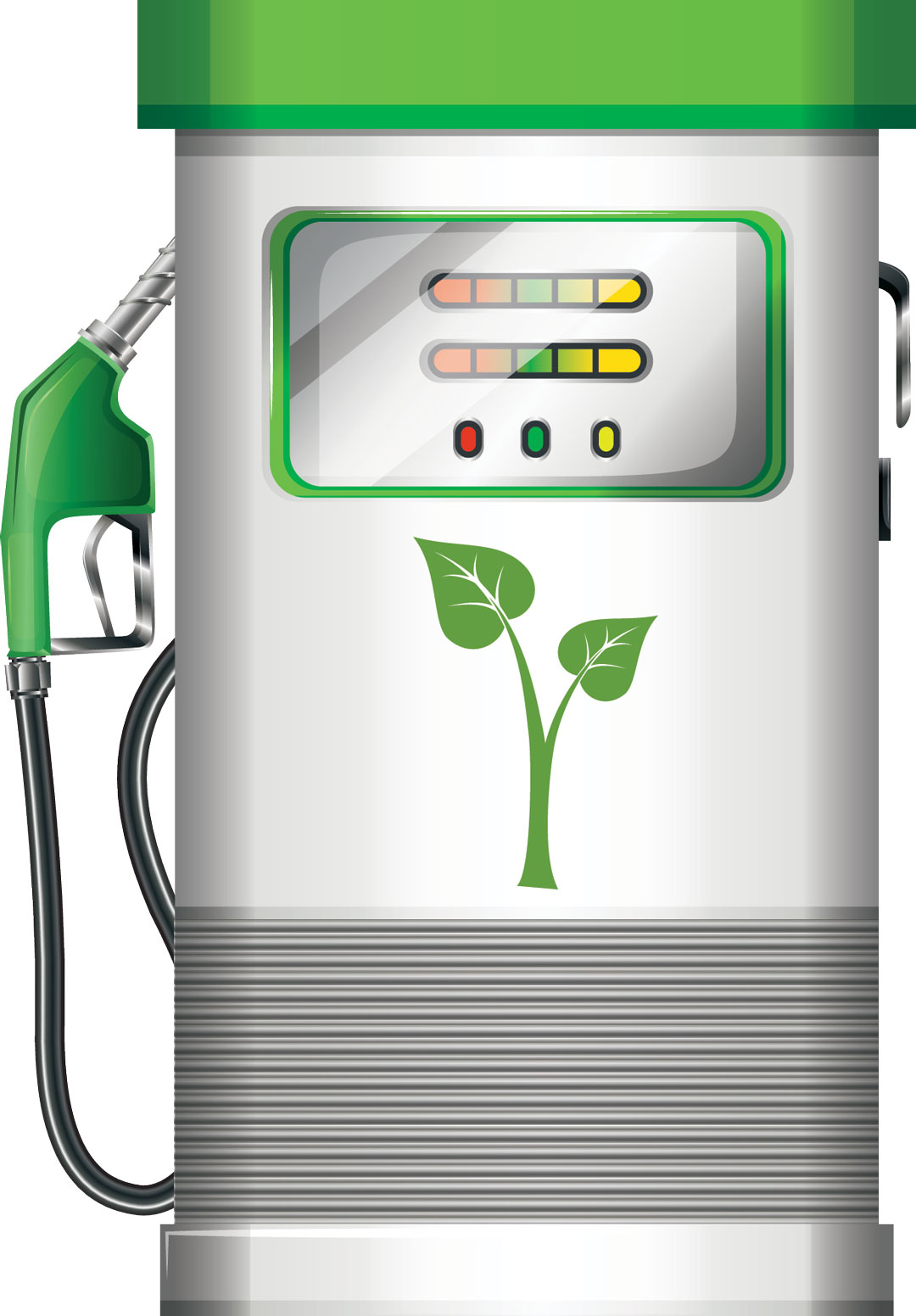WILL BIOFUELS BENEFIT FARMERS?
PART TWO OF A THREE-PART SERIES ON CARBON ISSUES IN FARMING • BY MELANIE EPP • GRAPHIC BY VECTEEZY.COM
As the world moves toward net-zero emissions by 2050, the use of lower carbon and non-emitting fuels is expected to ramp up. The Clean Fuel Standard (CFS) provides significant opportunities for western Canadian farmers, as demand for several crops will increase with the growth of the biofuels market. However, if implemented poorly, CFS could negatively impact farms across Canada. Concerns around land-use criteria, increased input costs and loss of competitiveness on the global market must be addressed.
WHAT IS THE CLEAN FUEL STANDARD?
The CFS is a proposed regulation that will require liquid fossil fuel suppliers to make the fuel they produce or import for use in Canada cleaner and generate less pollutants. In doing so, they will be an important component of Canada’s greenhouse gas emissions reduction initiatives.
The CFS builds on current federal and provincial renewable fuel regulations. Taking a lifecycle approach, it accounts for emissions associated with all stages of fuel production and use from extraction through to processing, distribution and end-use. It will require liquid fuel suppliers to gradually reduce the carbon intensity of the fuel they produce, and is expected to yield a decrease of approximately 13 per cent in overall carbon intensity by 2030.
To speed the transition, the Canadian government has extended support through a series of investments and initiatives that complement the CFS regulation. The government, for instance, recently invested $1.5 billion in a low-carbon and zero-emissions fuels fund, which will be used to support domestic production of low-carbon fuels such as hydrogen and biofuels.
Final regulations are expected in late 2021. If all goes as planned, CFS will come into force in December 2022.
Mark Johnson, spokesperson for Environment and Climate Change Canada (ECCC), said the CFS represents an economic opportunity for Canadian farmers. The canola sector, in particular, has identified domestic biofuels opportunities as an important element of market diversification, he said.
There are signs of growing interest in biofuels production in Canada, said Johnson. He pointed to Saskatchewan-based Covenant Energy, which recently announced its intentions to build a renewable fuel processing facility in southern Saskatchewan. In a recent press release, the company said it plans to produce 6,500 barrels a day and maintain 300 to 325 million litres per year of production capacity that will create demand for 35 million bushels of canola seed. This facility would be the first stand-alone hydrogenation-derived renewable diesel production plant in Canada. Company officials have said the CFS is a key driver of the project.
In Alberta, Project Wheatland, a $470 million wheat-based biofuels facility is expected to drive demand for feed wheat as well. It received $5 million in funding from Emissions Reduction Alberta (ERA). The group helps the province deliver on its environmental and economic goals by investing in clean technology solutions that reduce greenhouse gases.
The state-of-the-art Wheatland facility is expected to open its doors in September 2022, although this seems somewhat ambitious given construction is not far along, said Steve MacDonald, ERA chief executive officer.
Shannon Sereda, senior manager, government relations and policy, Alberta Wheat Commission (AWC) and Alberta Barley, said the two groups have given provisional support to the CFS and will work to better understand the market’s potential for growth. She predicted growth will depend on the price signals farmers receive and whether or not the market can compete using premium-grade wheat such as CWSWS as feedstock. For instance, it is yet unknown how Project Wheatland will work with farmers. “It will have to be through secure contracts, I would say, for farmers to risk growing a variety that maybe isn’t marketable at the same cost premium as other varieties,” she said.

DRAFT REGULATIONS CAUSE CONCERN
In December of 2020, the federal government released its long-awaited draft regulations for the CFS. It contains several changes to the proposed format introduced in 2016 that are worrying for western Canadian farmers.
The most significant change is in its scope, explained Marla Orenstein, director of the Natural Resources Centre at Canada West Foundation, a public policy think tank. The CFS was initially to apply to all fuels, including liquid, gaseous and solid fuels. The draft regulations will now only apply to liquid fossil fuels, primarily gasoline, diesel and oil, used mainly in the transportation sector. Orenstein believes the move to exclude non-liquid fuels is positive.
“There’s precedent for seeing whether it works or not,” she said, and pointed to jurisdictions such as California and the European Union. “And the answer is it does.”
“On the gas and [solid] fuel side … because nobody had done anything like that before, it was going to be less certain what it was going to deliver and how complicated that was going to be in relation to the benefit of reduced greenhouse gas emissions,” she added. “I think there are probably better ways to tackle emissions associated with solid fuels and gaseous fuels.”
The subtraction of certain types of fuel will stifle emissions reductions. The government had earlier projected a 30-megatonne (Mt) reduction. Now it anticipates a reduction between 17.5 and 20.6 Mt.
Carbon intensity reduction requirements were also amended, and the CFS will now commence in December 2022, six months later than was first expected.
Chris Vervaet, executive director of the Canadian Oilseed Processors Association, said the release of the draft regulations was an encouraging step in the right direction. For the most part, he likes what he sees. “But there are also significant components in the regulation that leave a lot to be desired, frankly, in terms of really sending that clear demand signal for biofuels,” he said. “There are elements in it that might prevent good uptake from the canola industry to participate in the program.”
Like Orenstein, Vervaet mentioned land-use compliance and biodiversity criteria as possible problems. As described, the criteria within the CFS do not fully recognize Canadian farm practices as sustainable, he said.
“Canadian farmers have demonstrated time and time again they are sustainable,” he said. “And most notably, we have aggregate compliance for our sustainable production practices for access into the U.S. biofuel market. We see every reason for Canada to accept Canadian farmers as compliant to these criteria as well on an aggregate basis.”
Vervaet said the canola industry pressed hard to have zero and minimum tillage factored into the CFS lifecycle analysis. He is encouraged to see its inclusion, as these practices have a positive effect on farm carbon emissions intensity.
WHAT’S THE SCORE?
Carbon intensity scores are derived from the amount of greenhouse gas emissions generated by the lifecycle of a given fuel—from extraction to production, distribution and use. These scores, which will include the lifecycle analysis of various feedstocks used for biofuels is a critical component of the CFS. Carbon intensity scores will dictate the value of low-carbon fuels, such as biofuels, under the regulations. The obligated parties that must comply with the regulation, such as fossil fuel suppliers, are also eager to see where the carbon intensity scores line up. They will want to choose the most efficient feedstocks or biofuels to generate the most credits, said Vervaet.
“We’re pushing for some transparency on this model,” he said. “At the moment, we don’t have clarity on any of these items. But we do hope to have a better idea on those two components before the final regulations are intended to be released in December of this year.”
Read part three of our carbon series in the fall issue of GrainsWest.







Comments